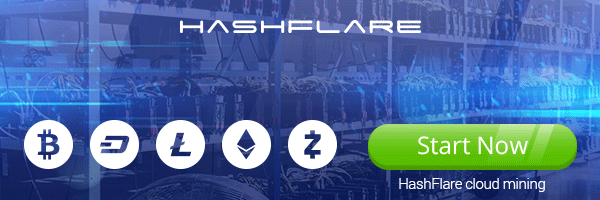
Opinion by: Sasha Shilina, founder of Episteme and researcher at Paradigm Research Institute
In 2024, Nature reported a record-breaking number of scientific paper retractions: over 10,000 papers pulled from journals due to fraud, duplication or flawed methodology. Peer review, the long-revered backbone of academic legitimacy, is under siege. It’s too slow, too opaque and too easily gamed.
Meanwhile, artificial intelligence models trained on this flawed data set generate confident but nonsensical output. Papers cite nonexistent studies. Research decisions are guided by influence, not inference. The internet, once hailed as a democratizing force for knowledge, is now a battleground of misinformation, clickbait and manipulated metrics.
We are living in an epistemic crisis.
And yet, buried in the unlikely corners of Crypto X and decentralized autonomous organization (DAO) forums, a new architecture is forming. Not for transferring value, but for verifying truth.
A layer 2 for knowledge
In the crypto world, layer 2s address the scalability issue. They help Ethereum process more transactions faster and cheaper. But what if the real scalability bottleneck isn’t financial — it’s epistemological?
Science isn’t scaling. Reputation hierarchies, legacy journals and funding gatekeepers bottleneck it. Brilliant hypotheses die in grant purgatory. Replications go unrewarded. Errors take years to correct, if ever.
What does a “layer 2 for truth” actually look like? This system transforms scientific hypotheses into onchain objects, public, persistent and open to scrutiny. Instead of broadcasting belief on social media, participants stake it, putting skin in the game and exposing their convictions to real risk. Resolution becomes a hybrid process: AI models parse and score evidence, human validators contest or affirm outcomes, and decentralized oracles record the result transparently. Crucially, incentives shift away from prestige and toward precision, rewarding those who are right, not just well-positioned.
This is not decentralized finance (DeFi). It’s not even decentralized science (DeSci). It’s agentic, decentralized science (DeScAI). More radically, however, it’s epistemic finance: Markets built not around coins but claims.
Betting on reality
This isn’t just science gambling. It’s a structural inversion. Today, the academic economy rewards being interesting, not correct. Flashy papers get media attention and grant renewals, whether or not their findings replicate. Meanwhile, replication studies, null results and quiet work often vanish.
Prediction markets can flip the script. They pay you to be right. Not to be loud, famous or institutionally blessed, but simply correct about the world. If a biotech researcher predicts that a particular compound will reduce tumor growth by 20% in mice, and they’re right, they win. If they’re wrong, they lose. Simple. Transparent. Brutally honest.
In this model, belief becomes a measurable asset. Knowledge becomes liquid. The marketplace doesn’t just trade tokens; it trades epistemic confidence.
The oracle problem reimagined
In crypto, the “oracle problem” is getting real-world data onto the blockchain trustlessly. In this epistemic architecture, the oracle isn’t just a price feed. It mediates what is accepted as truth.
Related: Crypto policy trends to watch in 2025: Privacy, development and adoption
This raises uncomfortable questions: Who gets to decide what’s true? Can AI serve as a reliable resolver? What happens when markets are wrong?
The answer is that there’s no singular oracle. There’s a protocol. Resolution becomes a process: part-automated, part-contested and part-historical. Participants challenge, update and refine claims. Truth becomes iterative, open-source and adversarial, like code.
Yes, this opens the door to epistemic volatility. In a world where even Nobel laureates get it wrong, isn’t volatility better than stagnation?
From publishing to protocols
The internet disrupted publishing. Blockchains disrupted finance. Now, a third disruption is underway: the protocolization of knowledge.
In this emerging paradigm, the architecture of knowledge itself is being reimagined. Papers are no longer static PDFs but dynamic contracts embedded with predictive weight, designed to inform and be tested. Citations become more than scholarly gestures; they’re transformed into onchain links annotated with confidence scores and traceable influence. Once a closed gatekeeping ritual, peer review evolves into an open, adversarial verification market where claims can be challenged, revised and resolved in public view.
In this model, science stops being a static archive and becomes an economic, dynamic and plural living system.
Truth is the next asset class
We’ve priced money, time and attention. We’ve never truly priced belief. Not until now.
A new kind of market emerges, one that doesn’t reward speculation but verification — a civic instrument for aligning incentives around truth in an age of noise. The question isn’t whether these markets are risky. All markets are. The question is: Can we afford not to try?
If crypto is a new internet, we need more than memes, memecoins and monkey JPEGs. We need infrastructure for the next epistemic era: for validating what matters, when it matters, in public.
The next big layer isn’t for money. It’s for the truth.
Opinion by: Sasha Shilina, founder of Episteme and researcher at Paradigm Research Institute.
This article is for general information purposes and is not intended to be and should not be taken as legal or investment advice. The views, thoughts, and opinions expressed here are the author’s alone and do not necessarily reflect or represent the views and opinions of Cointelegraph.





 Bitcoin
Bitcoin  Ethereum
Ethereum  Tether
Tether  XRP
XRP  USDC
USDC  Wrapped SOL
Wrapped SOL  TRON
TRON  Lido Staked Ether
Lido Staked Ether  Dogecoin
Dogecoin
Be the first to comment